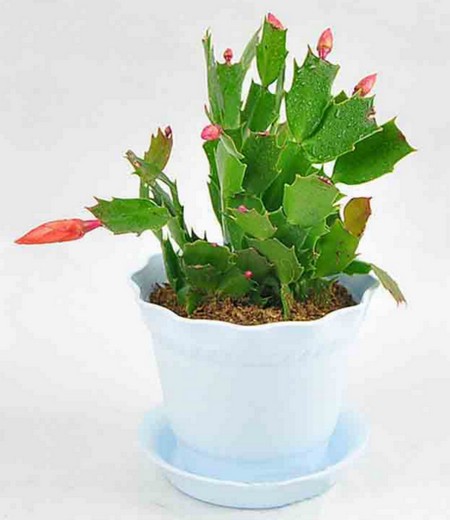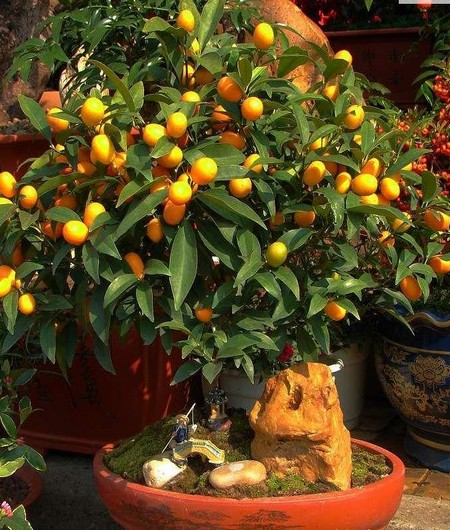How to bloom the crab claw orchid-matters needing attention in flowering maintenance and flowering management
Recently, the crab claw orchid in the science and technology park is also pregnant with buds, and the appearance of budding makes us full of expectation. After the Autumn Equinox, all crab claw orchids began to differentiate into flower buds during this period, indicating that plants can adjust their growth according to the length of sunshine every day. We sometimes come across people who love flowers to consult us, saying that the crab claw orchid that we raise does not blossom. What is the matter?

The crab claw orchid, which is properly supported and grafted in a bowl, can reach a crown diameter of two to three feet after three years, and can blossom two or three hundred flowers at the same time. Especially in the long winter lunar month, the outdoor flowers and plants withered, but the crab claw orchid is in full bloom and full of vitality. The green and thick leafy stem, set off against the colorful florets, is particularly beautiful. But to make it colorful year after year, it is not an easy task, in addition to the usual careful cultivation, the maintenance and management before and after flowering is particularly important.
After the autumn is cool, the crab claw orchid can conceive the bud to enter the florescence, at this time move the flower to the sunny place indoors, so as not to damage the bud because of the big temperature difference between day and night. At the same time to trim the flower shape, those uneven stem nodes and the main stem nodes hanging too many weak buds properly cut off, do not be reluctant to give up. There are two points necessary to do this: first, after trimming, the plant shape is symmetrical, keep the umbrella shape, and achieve the purpose of beauty. Second, get rid of the weak and surplus buds and make them grow vigorously throughout the flowering period, and the flowers are the same size. Otherwise, the buds of the apical stem nodes will wilt due to lack of nutrients.
During the flowering period, granular compound fertilizer can be applied once every ten days, and be buried shallowly in the soil along the basin soil. Do not go near the root to avoid burning the root. The basin soil can be seen wet and dry. If you do a good job of pre-flower maintenance and management, you will see a beautiful and spectacular crab claw orchid in winter and early spring next year.
The flower pattern of crab claw orchid will gradually weaken and come to an end from the end of February to early March in the coming year. At this time, the crab claw orchid is about to enter the dormant period, the original hanging flowers of those stem nodes, most of the soft wrinkled, although some still hang a few residual flowers, but all should be cut off, and pay attention to trimming the flower shape. Before and after the Spring Equinox, the flowers will be placed on the balcony or window shelter ventilation, basin soil to keep dry, often spray some water mist to the plant, so that the branches bright. As soon as the dormant period is over and the new buds sprout, they can be fertilized and watered normally.
1. Crab claw orchids can be watered when they bloom, but less watering and no watering as far as possible, otherwise it is easy to cause buds to fall. Crab claw orchid in flowering as little as possible, do not fertilize, once every half a month, watering is best in the morning, the water temperature is quite good with the environment, basin soil should not be too dry or too wet, watering should be uniform to moist basin soil, basin bottom is not running water, especially clayey soil planting should pay attention to, must not be watered, to put it simply, less watering.
2. When the crab claw orchid blossoms, do not move the position. The bud of the crab claw orchid has a strong phototaxis. Changing places frequently will make the bud twist to the sun frequently, and the final result is to break the neck, so when the crab claw orchid blossoms, do not change position, otherwise you may see buds falling constantly.
- Prev

How to manage the fruiting period of potted kumquat in flowering and fruiting stage
Potted kumquat often produces the phenomenon of falling flowers and fruits. Such as rainy flowering, excessive control of moisture, or short supply of fertilizer and water when sprouting new shoots, as well as high temperature, are easy to cause falling flowers and fruits. For this reason, the management and control of fruit period should be done well. Before and after flowering, except for the correct
- Next

How to fertilize crab claw orchid during non-flowering period? how to blossom-flowering maintenance
Recently, the crab claw orchid in the science and technology park is also pregnant with buds, and the appearance of budding makes us full of expectation. After the Autumn Equinox, all crab claw orchids began to differentiate into flower buds during this period, indicating that plants can adjust according to the length of sunshine every day.
Related
- Fuxing push coffee new agricultural production and marketing class: lack of small-scale processing plants
- Jujube rice field leisure farm deep ploughing Yilan for five years to create a space for organic food and play
- Nongyu Farm-A trial of organic papaya for brave women with advanced technology
- Four points for attention in the prevention and control of diseases and insect pests of edible fungi
- How to add nutrient solution to Edible Fungi
- Is there any good way to control edible fungus mites?
- Open Inoculation Technology of Edible Fungi
- Is there any clever way to use fertilizer for edible fungus in winter?
- What agents are used to kill the pathogens of edible fungi in the mushroom shed?
- Rapid drying of Edible Fungi

